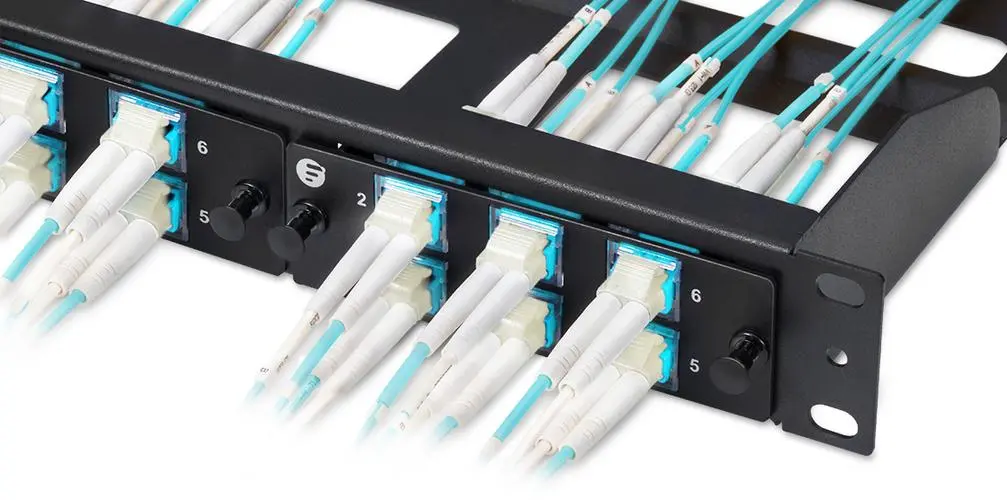Fiber optic adapters can accurately connect two connectors and ensure that the maximum light source is transmitted while minimizing the loss. They are mainly used to connect fiber optic patch cords to fiber optic patch cords or fiber optic patch cords to devices. So, do you know the working principle, common types, precautions for selecting fiber optic adapters, and cleaning methods of fiber optic adapters? The following will introduce these very practical fiber optic adapter knowledge to help you answer your questions.

Working principle of fiber optic adapter
The key to fiber optic connection is the precise alignment of the fiber core, so traditional connection methods (such as welding) have certain defects. The difference is that each fiber optic adapter has an alignment sleeve inside, which can ensure the accuracy of the connection and achieve high-performance connection between fiber optic jumpers.
Common types of fiber optic adapters
There are many types of fiber optic adapters. The following mainly introduces the common fiber optic adapters such as LC fiber optic adapters, FC fiber optic adapters, SC fiber optic adapters and bare fiber adapters.
LC fiber optic adapter: This type of fiber optic adapter can be used to connect LC fiber optic patch cords or LC connectors. It has many types such as LC-LC, LC-FC, LC-SC, LC-ST and LC-MU.
FC fiber optic adapter: This type of fiber optic adapter can be used to connect FC fiber optic patch cords or FC connectors. There are different types such as square, single-mode and multi-mode, but these different types of FC fiber optic adapters all have metal shells and ceramic sleeves.
SC fiber adapter: can be used to connect SC fiber patch cords or SC connectors, and there are many types, such as standard female-female SC adapters and hybrid SC adapters. Most SC fiber adapters come with ceramic sleeves, while the fiber type of SC fiber adapters with bronze sleeves is usually multimode.
Special Bare Fiber Adapters: Bare fiber adapters are a special type of fiber optic adapter that can be used to connect bare fiber cables to optical devices. This type of adapter allows the cable to be installed into the connection slot, whether it is plugged into a companion or electronic device.
Main factors for choosing a fiber optic adapter
Since there are many types of fiber optic adapters and the appearance of fiber optic adapters supplied by different suppliers is very similar, you may not know how to choose. Generally speaking, when choosing a fiber optic adapter, you should consider the following two points.
Type of cable required
If the fiber optic adapter needs to connect the same type of cable and connector, you can use a fiber optic adapter with a square, rectangular or round interface. If the cable types you need to connect are different, you need to use a hybrid fiber optic adapter, which can connect any two types of fiber optic patch cords together. Since there are many varieties of hybrid fiber optic adapters, it is important to know what type of cable you need to connect before purchasing.
Material of the alignment sleeve of the fiber optic adapter
The alignment sleeve is the most important part of the fiber optic adapter. Some manufacturers choose metal as the material of the alignment sleeve, but it has been proven that the use effect of fiber optic adapters made of ceramic is much better than that of fiber optic adapters using metal as the alignment sleeve. This is because the crystal structure of ceramic is very hard and will not deform over time like metal materials. Therefore, it can achieve fast alignment and high-precision fiber end face connection.
Fiber Optic Adapter Cleaning Method
Although the fiber optic adapter is relatively small and belongs to the small parts in the fiber optic wiring, it does not affect its important position in the fiber optic wiring system. And it needs to be cleaned like other fiber optic equipment. There are two main cleaning methods, namely dry cleaning and wet cleaning.
1. Dry cleaning: First, insert a dry cleaning stick into the fiber optic adapter, rotate it to clean it, then remove it, then align the cleaning stick with the inside of the sleeve, clean the connector inside the fiber optic adapter, and check whether the end face of the connector is contaminated.
2. Wet cleaning: First, dip the cleaning stick into the fiber optic cleaning fluid, insert the wet cleaning stick into the adapter, rotate the cleaning stick while aligning it with the sleeve surface, then take a dry cotton swab to clean the connector inside the fiber optic adapter, and then check whether the end face of the connector is contaminated.
Conclusion
For fiber optic adapters, fiber alignment is very important. If the fiber is not properly aligned, there will be a large loss at the connection. If the loss is too large, the network will not operate. In the fiber optic communication system, no matter how simple or small the component is, it will play a vital role in the entire system.



